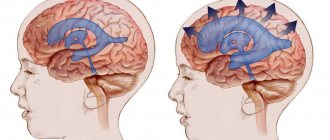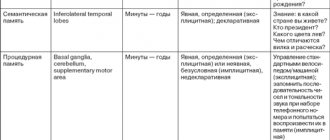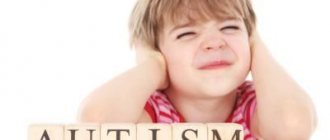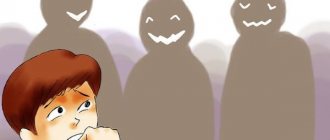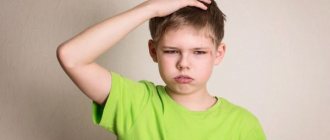Dysarthria in children.
Dysarthria in children is one of the types of speech disorders that occurs due to damage to the central nervous system. The most obvious disorders of this disease are changes in intonation, tempo and rhythm of speech, as well as a violation of voice formation and a disorder of articulation of sounds.
Children who suffer from dysarthria have great difficulty chewing and swallowing. They sometimes have difficulty buttoning clothes, hopping on one leg, or cutting with scissors. It is also difficult for them to write, so they study in specialized schools. Very often there are contradictions between neurologists and speech therapists regarding dysarthria. If a neurologist does not see obvious disturbances in the function of the cranial nerves, he cannot call the speech disorder dysarthria. This question is almost a stumbling block between neurologists and speech therapists. This is due to the fact that a neurologist, after making a diagnosis of dysarthria, is obliged to carry out serious therapy for the treatment of brainstem disorders, although such disorders (excluding dysarthria) do not seem to be noticeable. The medulla oblongata, as well as the cervical spinal cord, often experiences hypoxia during childbirth. This leads to a sharp decrease in motor units in the nerve nuclei responsible for articulation. During a neurological examination, the child adequately performs all tests, but cannot cope properly with articulation, because it is necessary to perform complex and fast movements that are beyond the strength of weakened muscles.
Therapy for paralysis
Pseudobulbar syndrome does not appear out of nowhere - it comes in response to an underlying disease. Therefore, when treating paralysis, it is necessary to defeat the root cause of the disease in both adults and children. For example, to influence hypertension, experts prescribe vascular and antihypertensive therapy.
In addition to the main cause of the syndrome, attention should also be paid to normalizing the functioning of neurons and improving blood circulation in the brain (Aminalon, Encephabol, Cerebrolysin). Metabolic, vascular, nootropic (“Nootropil”, “Pantogam”) and acetylcholine-breaking agents (“Oxazil”, “Proserin”) will help cope with the disease.
Unfortunately, there is no single drug for the treatment of paralysis yet. The specialist must draw up a specific set of therapy, taking into account all the existing pathologies in the patient. Moreover, in addition to drug treatment, it is necessary to add breathing exercises, exercises for all affected muscles, and physiotherapy.
Also, in case of incorrect pronunciation of words, patients should take a course of classes with a speech pathologist. This therapy will be especially useful for children. This will make it easier for the child to adapt to school or another educational institution.
The chances of improving your health will increase significantly if you use stem cells to treat your illness. They are capable of triggering the replacement of the myelin sheath, which will lead to restoration of the functioning of damaged cells.
How to influence the condition in infants
If pseudobulbar palsy occurs in a newborn child, it is necessary to begin comprehensive treatment as soon as possible. It usually includes: feeding the child through a tube, massage of the mouth muscles and electrophoresis in the cervical spine.
We can talk about improving the general condition of the baby only when the child begins to develop reflexes that were absent before; the neurological condition is stabilized; there will be positive changes in the treatment of deviations that were previously established. Also, the newborn should increase motor activity and muscle tone.
Infant rehabilitation
When incurable lesions are not detected in a newborn, usually the recovery process begins already during the first two weeks of the baby’s life. If pseudobulbar palsy is detected, treatment occurs in the fourth week and necessarily requires rehabilitation. For children who have suffered seizures, doctors select medications especially carefully. Cerebrolysin is usually used (about 10 injections). And to maintain the body, Phenotropil and Phenibut are prescribed.
Massage and physiotherapy
As an additional therapy that will speed up the process of recovery and rehabilitation, specialists prescribe therapeutic massage and physiotherapy.
The massage should be performed strictly by a professional and have a predominantly tonic and sometimes relaxing effect. Even children can carry out such procedures. If a child has spasticity of the limbs, it is better to start procedures already on the tenth day of life. The optimal course of therapy is 15 sessions. At the same time, it is recommended to take the Mydocalma course.
Physiotherapy usually involves magnesium sulfate electrophoresis with aloe applied to the cervical area.
Pseudobulbar dysarthria
This is one of the neuralgic disorders that is a consequence of pseudobulbar palsy. The disease occurs due to disruption of the pathways that connect the bulbar pulp to the brain. Pathology can have 3 degrees:
- Easy. Almost invisible, characterized by unclear pronunciation of many sounds in children.
- Average. The most common. Almost all facial movements become impossible. It is uncomfortable for patients to swallow food, and the tongue is inactive. Speech becomes slurred and unclear.
- Heavy. The patient cannot control his facial expressions, and the mobility of the entire speech apparatus is impaired. Patients often have a drooping jaw and a stiff tongue.
Treatment of pathology is only possible through a combination of medications, massage and reflexology at the same time. The syndrome poses a huge danger to human life, so delaying treatment is highly discouraged.
Causes of dysarthria
1. Organic damage to the central nervous system as a result of the influence of various unfavorable factors on the developing brain of a child in the prenatal and early periods of development. Most often, these are intrauterine lesions that are the result of acute, chronic infections, oxygen deficiency (hypoxia), intoxication, toxicosis of pregnancy and a number of other factors that create conditions for the occurrence of birth trauma. In a significant number of such cases, asphyxia occurs during childbirth and the child is born premature. 2. The cause of dysarthria may be Rh factor incompatibility. 3. Dysarthria occurs somewhat less frequently under the influence of infectious diseases of the nervous system in the first years of a child’s life. Dysarthria is often observed in children suffering from cerebral palsy (CP). According to E.M. Mastyukova, dysarthria with cerebral palsy manifests itself in 65-85% of cases. Classification of clinical forms of dysarthria Classification of clinical forms of dysarthria is based on identifying different locations of brain damage. Children with various forms of dysarthria differ from each other in specific defects in sound pronunciation, voice, and articulatory motor skills, require different speech therapy techniques and can be corrected to varying degrees.
Forms of dysarthria
Bulbar dysarthria
Bulbar dysarthria (from the Latin bulbus - a bulb, the shape of which is the medulla oblongata) occurs when there is a disease (inflammation) or tumor of the medulla oblongata. In this case, the nuclei of the motor cranial nerves located there (glossopharyngeal, vagus and sublingual, sometimes trigeminal and facial) are destroyed. Characteristic is paralysis or paresis of the muscles of the pharynx, larynx, tongue, and soft palate. A child with a similar defect has difficulty swallowing solid and liquid food and has difficulty chewing. Insufficient mobility of the vocal folds and soft palate leads to specific voice disorders: it becomes weak and nasal. Voiced sounds are not realized in speech. Paresis of the muscles of the soft palate leads to the free passage of exhaled air through the nose, and all sounds acquire a pronounced nasal (nasal) tone. In children with the described form of dysarthria, atrophy of the muscles of the tongue and pharynx is observed, and muscle tone also decreases (atonia). The paretic state of the tongue muscles causes numerous distortions in sound pronunciation. Speech is slurred, extremely unclear, slow. The face of a child with tabloid dysarthria is amicable.
Signs of the disease
Pseudobulbar syndrome is characterized by speech and swallowing disorders at the same time. Signs of oral automatism and violent grimaces also appear.
patient with pseudobulbar syndrome
The patient's speech problems dramatically affect the pronunciation of words, diction and intonation. There is a “loss” of consonants, the meaning of words is lost. This phenomenon is called dysarthria and is caused by spastic muscle tone or paralysis. In this case, the voice becomes dull, quiet and hoarse, and dysphonia occurs. Sometimes a person loses the ability to speak in a whisper.
Problems with swallowing are explained by weakness of the muscles of the soft palate and the pharynx itself. Food often gets stuck behind the teeth and on the gums, and liquid food and water leak out through the nose. But at the same time, atrophy and muscle twitching do not bother the patient, and the pharyngeal reflex often even becomes increased.
Signs of oral automatism usually go unnoticed by the patient. Most often, for the first time they make themselves felt during a medical examination by a neurologist. Thanks to the impact on certain areas, the doctor detects contraction of the muscles of the mouth or chin. Typically, the reaction becomes noticeable when you tap your nose or press the corner of your mouth with a special instrument. Also, patients' masticatory muscles react to a light tap on the chin.
Forced crying or laughter is short-lived. Facial expressions change involuntarily, regardless of a person’s real feelings or impressions. The muscles of the entire face are often affected, as a result of which it becomes difficult for the patient to squint his eyes or open his mouth.
Pseudobulbar palsy does not appear out of nowhere. It develops together with other neurological disorders. The symptoms of the disease directly depend on the root cause of the disease. For example, damage to the frontal part of the head is characterized by an emotional-volitional disorder. The patient becomes inactive, lethargic, or, conversely, overly active. Motor and speech disorders may occur, and memory deterioration may occur.
Subcortical dysarthria
Subcortical dysarthria occurs when the subcortical nodes of the brain are damaged. A characteristic manifestation of subcortical dysarthria is a violation of muscle tone and the presence of hyperkinesis. Hyperkinesis is violent involuntary movements (in this case in the area of articulatory and facial muscles) that are not controlled by the child. These movements can be observed at rest, but usually intensify during speech. The changing nature of muscle tone (from normal to increased) and the presence of hyperkinesis cause peculiar disturbances in phonation and articulation. A child can correctly pronounce individual sounds, words, short phrases (especially in a game, in a conversation with loved ones or in a state of emotional comfort) and after a moment he is unable to utter a single sound. An articulatory spasm occurs, the tongue becomes tense, and the voice is interrupted. Sometimes involuntary screams are observed, and guttural (pharyngeal) sounds “break through.” Children may pronounce words and phrases excessively quickly or, conversely, monotonously, with long pauses between words. Speech intelligibility suffers due to unsmooth switching of articulatory movements when pronouncing sounds, as well as due to disturbances in the timbre and strength of the voice. A characteristic sign of subcortical dysarthria is a violation of the prosodic aspect of speech - tempo, rhythm and intonation. The combination of impaired articulatory motor skills with disorders of voice formation and speech breathing leads to specific defects in the sound aspect of speech, which manifest themselves variably depending on the child’s condition, and are reflected mainly in the communicative function of speech. Sometimes with subcortical dysarthria in children, hearing loss is observed, complicating a speech defect.
Difference between bulbar syndrome and pseudobulbar syndrome
Bulbar syndrome is a complex of disorders that occur when the nuclei themselves in the medulla oblongata are damaged. These centers are located in a thickening of the brain called the bulba, which gives the syndrome its name. And with pseudobulbar palsy, the nuclei continue to function, although coordination between them and other nerve formations is disrupted.
In both cases, articulation, phonation and swallowing are affected. But the mechanism of development of these disorders is different. With bulbar syndrome, severe peripheral paralysis of the muscles of the pharynx and soft palate occurs with degeneration of the muscles themselves, often accompanied by disruption of vital functions. And with pseudobulbar syndrome, the paralysis is central in nature, the muscles remain unchanged.
Cortical dysarthria
Cortical dysarthria is very difficult to isolate and recognize. With this form, voluntary motor skills of the articulatory apparatus are impaired. In its manifestations in the sphere of sound pronunciation, cortical dysarthria resembles motor alalia, since, first of all, the pronunciation of words with a complex sound-syllable structure is impaired. In children, the dynamics of switching from one sound to another, from one articulatory posture to another, is difficult. Children are able to clearly pronounce isolated sounds, but in the speech stream the sounds are distorted and substitutions occur. Combinations of consonant sounds are especially difficult. At an accelerated pace, hesitations appear, reminiscent of stuttering. However, unlike children with motor alalia, children with this form of dysarthria do not experience disturbances in the development of the lexico-grammatical aspect of speech. Cortical dysarthria should also be distinguished from dyslalia. Children have difficulty reproducing articulatory posture, and it is difficult for them to move from one sound to another. During correction, attention is drawn to the fact that defective sounds are quickly corrected in isolated utterances, but are difficult to automate in speech.
Diagnostics
To determine pseudobulbar syndrome in children, it is necessary to differentiate its symptoms from nephritis, parkinsonism, bulbar palsy and nerves. One of the distinguishing features of the pseudoform will be the absence of atrophy.
It is worth noting that in some cases it can be quite difficult to distinguish PS from Parkinson-like paralysis. This disease progresses slowly, and in the later stages apoplectic strokes are recorded. Moreover, signs similar to the syndrome appear: violent crying, speech disorder, etc. Therefore, a qualified doctor must determine the patient’s condition.
Pseudobulbar dysarthria
Pseudobulbar dysarthria is the most common form of childhood dysarthria. Pseudobulbar dysarthria is a consequence of organic brain damage suffered in early childhood, during childbirth or in the prenatal period as a result of encephalitis, birth injuries, tumors, intoxication, etc. The child experiences pseudobulbar paralysis or paresis caused by damage to the pathways coming from the cerebral cortex to the nuclei of the glossopharyngeal, vagus and hypoglossal nerves. According to the clinical manifestations of disorders in the area of facial and articulatory muscles, it is close to bulbar. However, the possibilities of correction and full mastery of the sound-pronunciation side of speech with pseudobulbar dysarthria are much higher. As a result of pseudobulbar palsy, the child's general and speech motor skills are impaired. The baby sucks poorly, chokes, chokes, and swallows poorly. Saliva flows from the mouth, facial muscles are disturbed. The degree of impairment of speech or articulatory motor skills may vary. Conventionally, there are three degrees of pseudobulbar dysarthria: mild, moderate, severe. 1. A mild degree of pseudobulbar dysarthria is characterized by the absence of gross disturbances in the motor skills of the articulatory apparatus. Articulation difficulties lie in slow, insufficiently precise movements of the tongue and lips. Disorders of chewing and swallowing are revealed faintly, with occasional choking. The pronunciation of such children is impaired due to insufficiently clear articulatory motor skills, speech is somewhat slow, and blurring is typical when pronouncing sounds. More often, the pronunciation of sounds that are difficult to articulate suffers: zh, sh, r, ts, ch. Voiced sounds are pronounced with insufficient participation of the voice. Soft sounds are difficult to pronounce and require adding to the main articulation the raising of the middle part of the back of the tongue to the hard palate. Pronunciation deficiencies have an adverse effect on phonemic development. Most children with mild dysarthria experience some difficulty in auditory processing. When writing, they encounter specific errors in replacing sounds (t-d, t-ts, etc.). There is almost no violation of the structure of the word: the same applies to grammatical structure and vocabulary. Some uniqueness can only be revealed through a very careful examination of children, and it is not typical. So, the main defect in children suffering from mild pseudobulbar dysarthria is a violation of the phonetic aspect of speech. Children with a similar disorder, who have normal hearing and good mental development, attend speech therapy classes at the regional children's clinic, and at school age - a speech therapy center at a comprehensive school. Parents can play a significant role in eliminating this defect. 2. Children with moderate dysarthria make up the largest group. They are characterized by amicity: lack of movement of the facial muscles. The child cannot puff out his cheeks, stretch out his lips, or close them tightly. Tongue movements are limited. The child cannot lift the tip of his tongue up, turn it to the right, left, or hold it in this position. Switching from one movement to another is a significant difficulty. The soft palate is often inactive, and the voice has a nasal tone. Characterized by profuse salivation. The acts of chewing and swallowing are difficult. The consequence of dysfunction of the articulatory apparatus is a severe pronunciation defect. The speech of such children is usually very slurred, slurred, and quiet. The articulation of vowels, usually pronounced with a strong nasal exhalation, is characteristic due to the inactivity of the lips and tongue. The sounds “a” and “u” are not clear enough, the sounds “i” and “s” are usually mixed. Of the consonants, p, t, m, n, k, x are most often preserved. The sounds ch and ts, r and l are pronounced approximately, like a nasal exhalation with an unpleasant “squelching” sound. The exhaled mouth stream is felt very weakly. More often, voiced consonants are replaced by voiceless ones. Often sounds at the end of words and in combinations of consonants are omitted. As a result, the speech of children suffering from pseudobulbar dysarthria is so incomprehensible that they prefer to remain silent. Along with the usually late development of speech (at the age of 5-6 years), this circumstance sharply limits the child’s experience of verbal communication. Children with such a disorder cannot study successfully in a comprehensive school. The most favorable conditions for their education and upbringing are created in special schools for children with severe speech impairments, where these students receive an individual approach. 3. A severe degree of pseudobulbar dysarthria - anarthria - is characterized by deep muscle damage and complete inactivity of the speech apparatus. The face of a child suffering from anarthria is mask-like, the lower jaw droops, and the mouth is constantly open. The tongue lies motionless on the floor of the oral cavity, lip movements are sharply limited. The acts of chewing and swallowing are difficult. Speech is completely absent, sometimes there are individual inarticulate sounds. Children with anarthria with good mental development can also study in special schools for children with severe speech impairments, where, thanks to special speech therapy methods, they successfully master writing skills and a curriculum in general education subjects. A characteristic feature of all children with pseudobulbar dysarthria is that with distorted pronunciation of the sounds that make up a word, they usually retain the rhythmic contour of the word, i.e., the number of syllables and stress. As a rule, they know the pronunciation of two- and three-syllable words; four-syllable words are often reproduced reflectively. It is difficult for a child to pronounce consonant clusters: in this case, one consonant is dropped (squirrel - “beka”) or both (snake - “iya”). Due to the motor difficulty of switching from one syllable to another, there are cases of likening syllables (dishes - “posyusya”, scissors - “noses”). Impaired motor skills of the articulatory apparatus leads to improper development of the perception of speech sounds. Deviations in auditory perception caused by insufficient articulatory experience and the lack of a clear kinesthetic image of sound lead to noticeable difficulties in mastering sound analysis. Depending on the degree of speech motor impairment, variously expressed difficulties in sound analysis are observed. Most special tests that reveal the level of sound analysis are not available to dysarthric children. They cannot correctly select pictures whose names begin with a given sound, come up with a word containing a certain sound, or analyze the sound composition of a word. For example, a twelve-year-old child who has studied for three years in a public school, answering the question what sounds in the words of the regiment, cat, names p, a, k, a; k, a, t, a. When completing the task of selecting pictures whose names contain the sound b, the boy puts aside a jar, a drum, a pillow, a scarf, a saw, and a squirrel. Children with better preserved pronunciation make fewer mistakes; for example, they select the following pictures based on the sound “s”: bag, wasp, plane, ball. For children suffering from anarthria, such forms of sound analysis are not available.
Treatment of dysarthria
Due to the fact that dysarthria is not an independent disease and can be observed with various manifestations of nervous system disorders, the content and order of all treatment measures will be established after the doctor makes a clinical diagnosis, taking into account the age and condition of the child. Treatment of dysarthria in children is carried out comprehensively. Depending on the stage of the disease, the following measures are used: speech therapy correction; drug treatment; massage; breathing exercises; Exercise therapy. Medicines are prescribed by a neuropsychiatrist. There are no drugs for the disease as such. The doctor prescribes medications that only remove the symptoms of the disease and alleviate the general condition of the patient.
How to treat
When pseudobulbar syndrome is detected, the underlying disease must first be treated. If it is hypertension, antihypertensive and vascular therapy is prescribed. For specific vasculitis (syphilitic, tuberculosis), antimicrobial agents and antibiotics must be used. In this case, treatment can be carried out jointly with specialized specialists - a dermatovenerologist or a phthisiatrician.
In addition to specialized therapy, drugs are prescribed to improve microcirculation in the brain, normalize the functioning of nerve cells and improve the transmission of nerve impulses. For this purpose, various vascular, metabolic and nootropic agents, anticholinesterase drugs are used.
There is no universal remedy for the treatment of pseudobulbar syndrome. The doctor selects a complex therapy regimen taking into account all existing disorders. In addition to taking medications, special exercises for the affected muscles, breathing exercises according to Strelnikova, and physiotherapy can be used. If children have speech disorders, classes with a speech therapist are required; this will significantly improve the child’s adaptation in society.
Unfortunately, it is usually not possible to completely get rid of pseudobulbar syndrome, because such disorders occur with severe bilateral brain lesions, which are often accompanied by the death of many neurons and destruction of nerve pathways. But treatment will compensate for the disorders, and rehabilitation activities will help the person adapt to the problems that have arisen. Therefore, you should not neglect your doctor’s recommendations, because it is important to slow down the progression of the underlying disease and preserve nerve cells.



